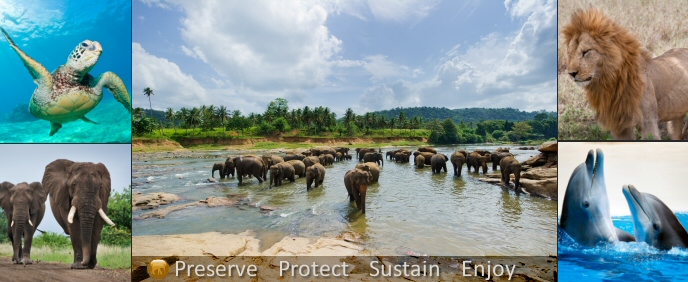
Eco Tours in the South Pacific - Sustainable Tourism & Conservation Laws
The South Pacific Ocean is home to many distinct nations that share a unique geological and ecological history. These countries have, by and large, been able to forgo certain concerns of national sovereignty in order to meet some mutual conservation goals. This spirit of cooperation is seen by many as an outgrowth of a very simple reality of the region: international conservation programs are not properly set up to benefit this unique area. By planning and implementing their own conservation programs, the nations of the south Pacific are able to create common-sense approaches to localized issues. They are able to do this while balancing the competing industrial and ecological interests that are ubiquitous with their economy and culture.
One of the most far-reaching of these regional legal frameworks is the Convention for the Protection of the Natural Resources and Environment of the South Pacific Region. By recognizing the importance of natural resources and the environment to the social and economic value of the south Pacific, this convention helps to preserve vital zones for both resource development and tourism. Specifically, it accomplishes this by officially "recognizing" the importance of the natural world, and by setting down provisions for agencies to oversee its use. For example, many international marine conservation groups in the south Pacific are a direct outgrowth of language in the convention that recognizes the threat to marine ecosystems. Most importantly, the convention empowers countries to draft conservation laws and enforce the provisions set down by those laws. By promoting a cooperative relationship between neighbouring nations, the convention has helped to ensure that no one country in the region can exert undue power over the resources of other nations. For tourists, this is an important piece of legislation to keep in mind during the planning stages of a trip. Sometimes, an assumption based off of an understanding of international laws can end poorly for someone that doesn't take regional conventions into account.
The Convention for the Protection of the Marine Environment and Coastal Areas of the South East Pacific is another attempt at cooperation. The objective of the law is to protect the waters and coasts within 200 miles of participating countries from illegal dumping and other pollution. It also protects the high seas beyond those 200 miles from pollution that could affect the area. This law has had some fairly obvious benefits since its implementation, most notably a dramatic reduction in offshore dumping. This reduction has made the waters surrounding south Pacific nations much less hazardous for exploration by tourists. It has also caused a slight raise in the cost of marine activities due to greater regulatory oversight.
The South Pacific is an extremely unique environment that is known by many as the top region for adventure travel. Tourists to this part of the world will have access to deep marine waters for fishing, a landscape dotted with islands for kayaking, and a host of other terrestrial activities. The south Pacific is also the jumping off point for most trips to Antarctica, making it a hub for adventurous travellers that are heading toward the Earth's southern terminus. The region is also renowned for its exceptional whale migrations. The majority of the countries in the southern Pacific are staunchly opposed to whaling in all its forms, so tourism that centers around an appreciation for these animals is commonplace.
In the end, the laws of the South Pacific as they relate to the environment are based off of a rational understanding of the function that resources play in society. These resources are readily available when there are healthy ecosystems producing them, so conservation here is more of a "common sense" practice than an ethical one. With so much of the income of these nations coming directly from tourism, the conservation of the natural world is a top priority in this region.
The South West Pacific also includes the popular Gateway to Australia cities of Sydney and Brisbane. Eco-Tourists can use The Gold Coast in the South or Cairns in the north as starting points to visit the Great Barrier Reef.

